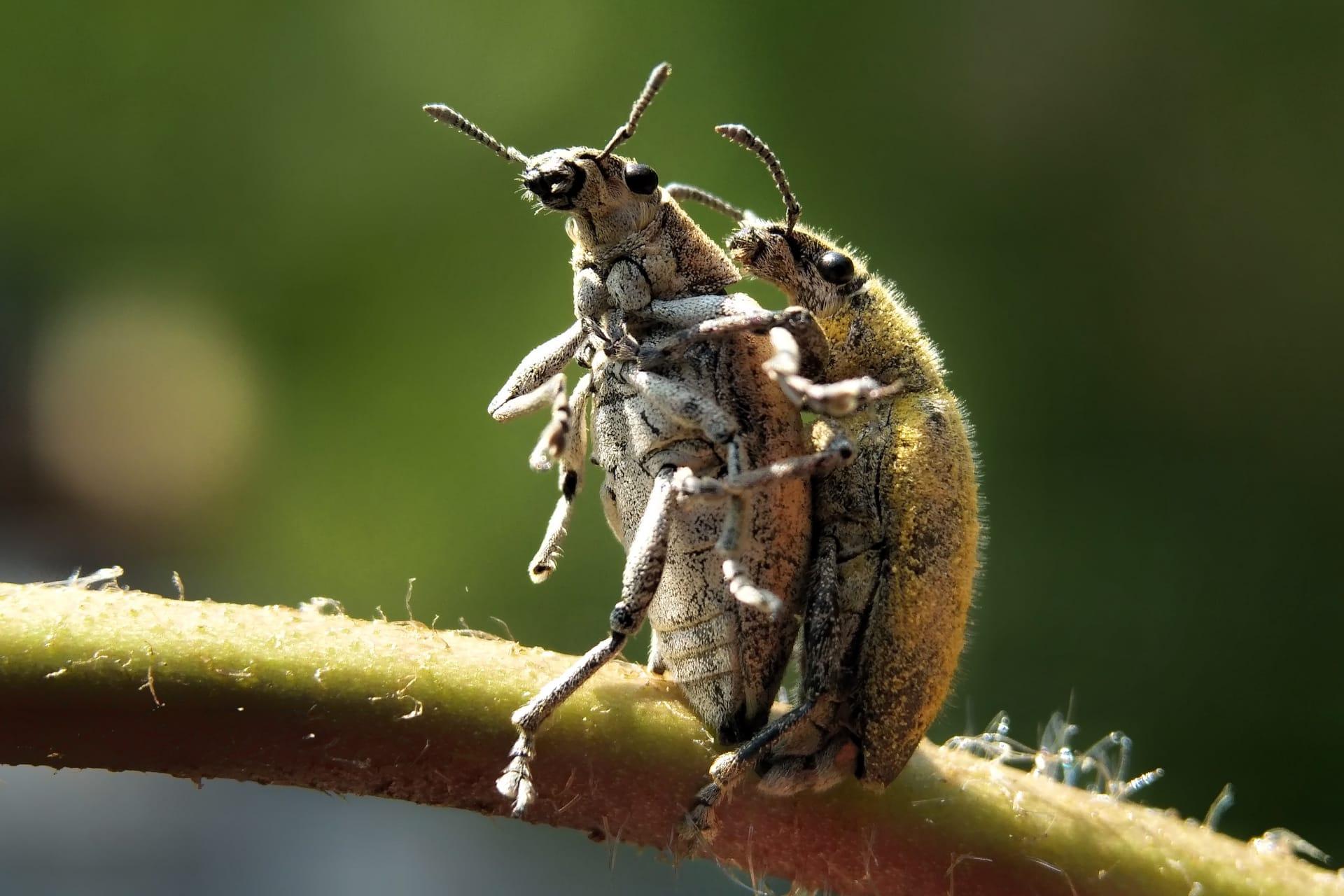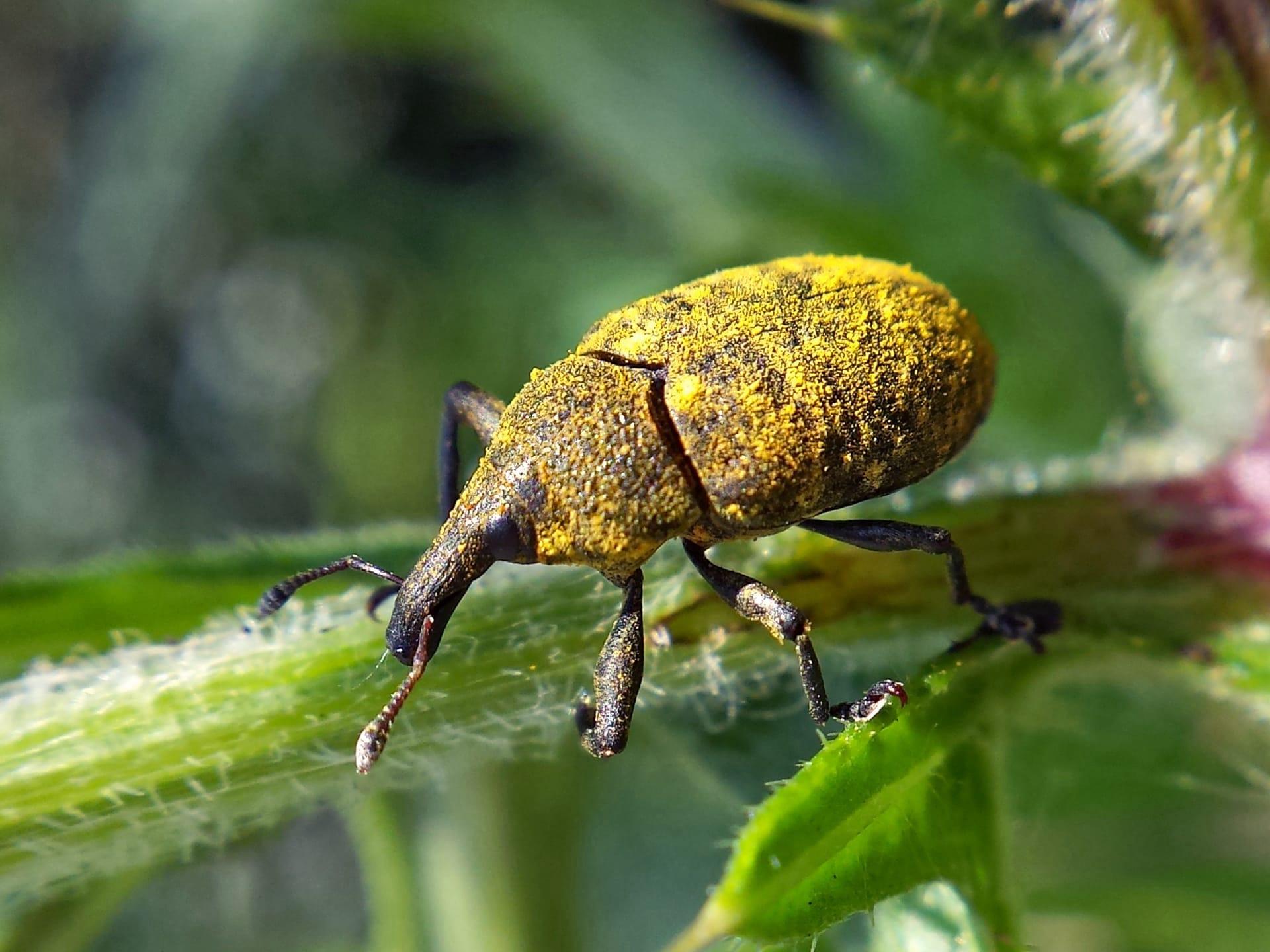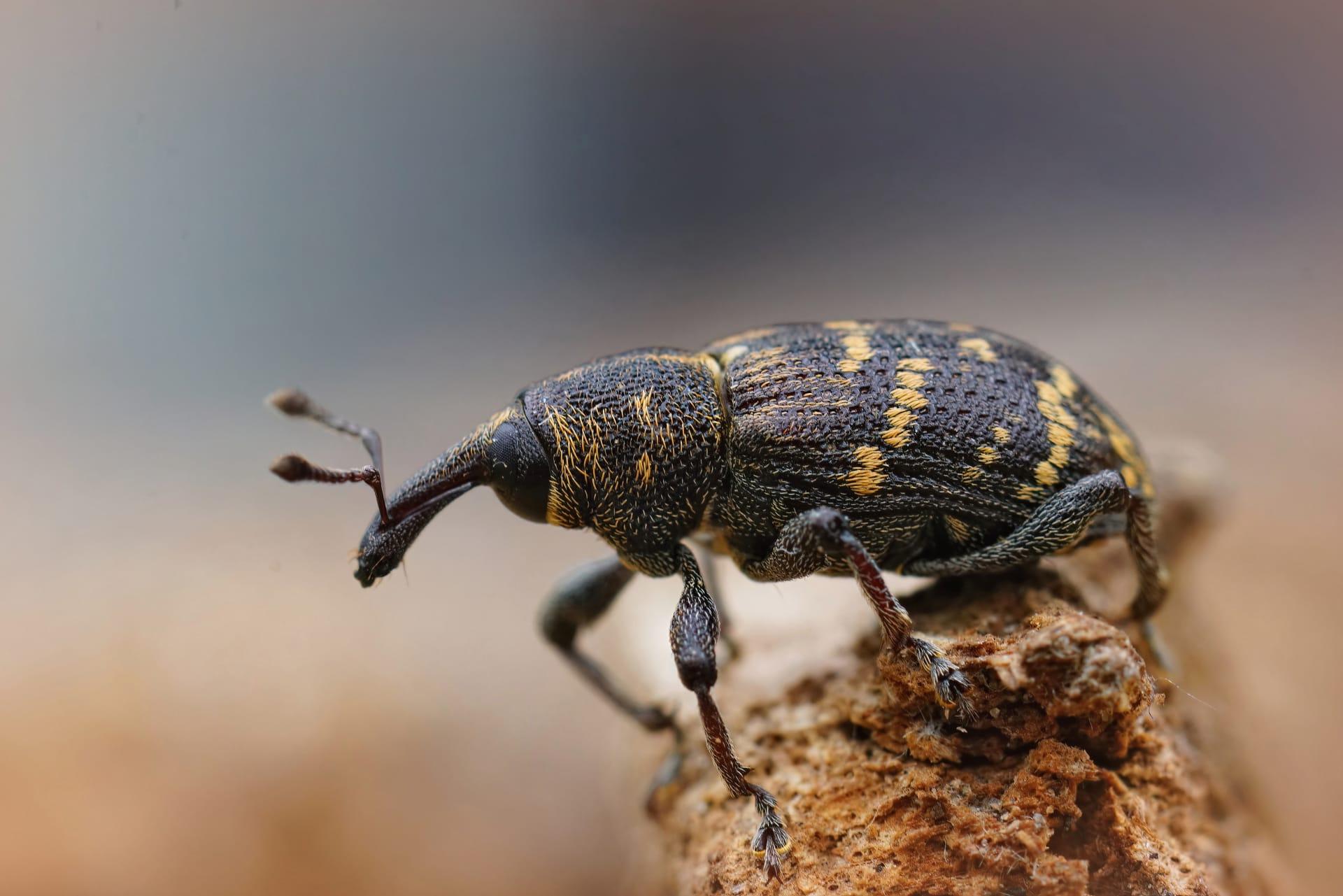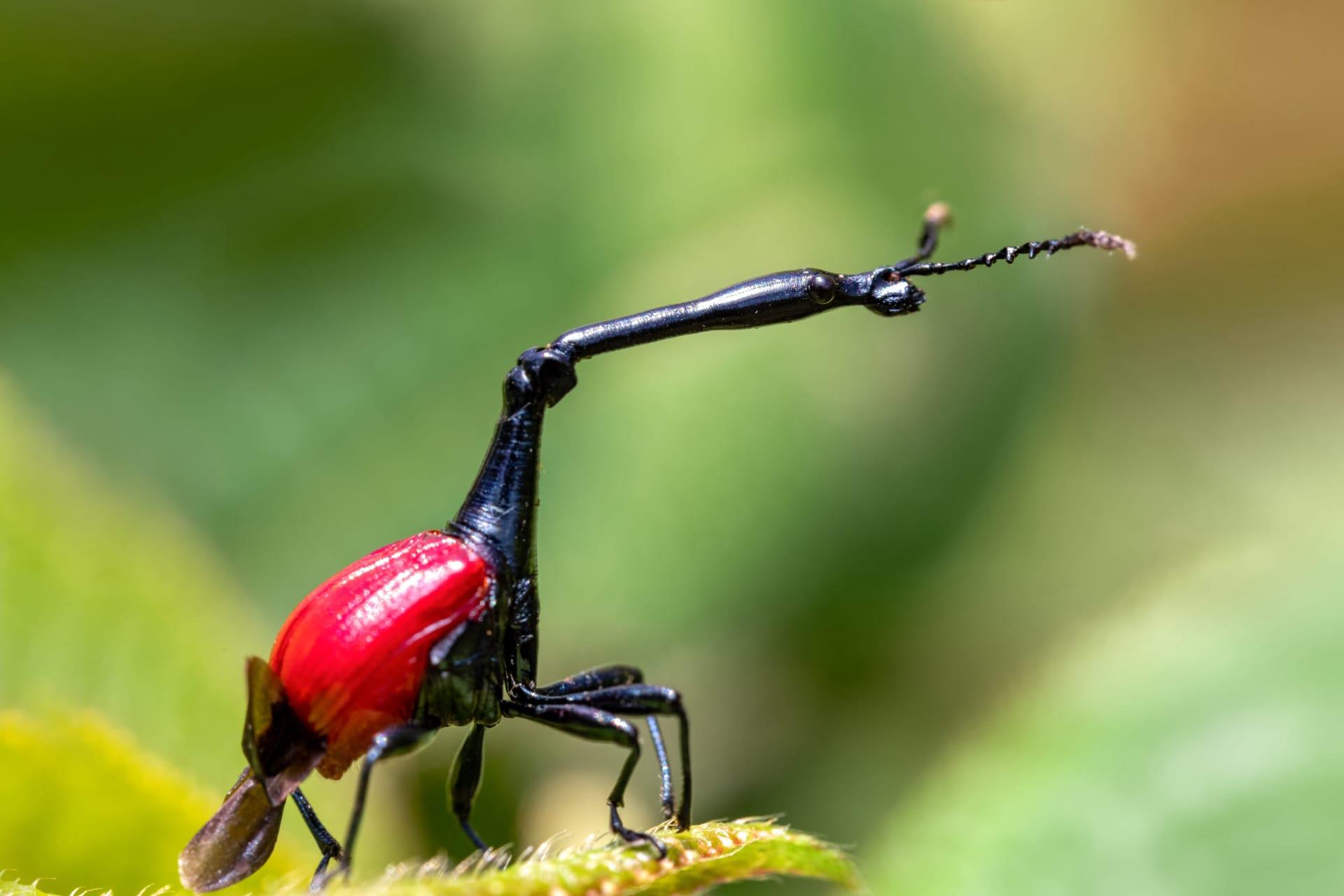Weevils Characteristics
- Home /
- Mini Encyclopedia /
- Animal /
- Weevils Characteristics
1
Weevils, intriguing little beetles, are famous for their elongated snouts, resembling miniature elephants. These creatures vary in size, typically ranging from 3 mm to 10 mm in length. They boast a surprisingly long lifespan for insects of their size, living up to two years under ideal conditions. This longevity is quite remarkable in the insect world, where many species live only a few weeks or months.
The most distinctive feature of weevils is undoubtedly their snout or rostrum. This elongated part of their head is not just for show; it's a highly functional tool. Weevils use their snout to bore into grains, nuts, fruits, or wood, depending on their species. This unique adaptation allows them to access food sources that other insects can't, making them both fascinating and, at times, frustrating to farmers and food processors.

2
Question: "What do weevils eat and how does this impact their environment?"
Answer: Weevils are predominantly herbivorous, feasting on a wide range of plant material. Some species specialize in grains, like the notorious boll weevil, which targets cotton buds and flowers. This diet has significant ecological implications. For example, the boll weevil's preference for cotton has historically impacted the cotton industry, causing substantial economic losses. Their feeding habits can lead to reduced crop yields and quality, necessitating careful management in agricultural settings.

3
Weevils, despite their small size, are quite the movers. They primarily rely on walking, using their six legs to traverse various surfaces. Some species are also capable of flight, sporting wing covers that lift to reveal membranous wings underneath. However, their flying skills are generally not as developed as in other beetles, making them more prone to wandering on foot.
In terms of feeding, weevils have a fascinating approach. They use their long snouts to bore into food sources, creating tunnels to lay eggs or access the inner parts of grains and fruits. Their larvae also continue this feeding pattern, often consuming the inside of seeds or plant stems. This behavior is essential for their survival but can be detrimental to crops and stored food products.

4
Weevils thrive in a variety of environments, showing a particular fondness for warm and humid conditions. Many species are found in agricultural areas, forests, and even homes, especially in pantries where food is stored. They adapt well to environments where their food sources, like grains and fruits, are plentiful. This adaptability makes them a common pest in many parts of the world.
Reproduction in weevils is quite intriguing. Females lay eggs inside food sources, using their snouts to create a safe nook. This ensures that the larvae have immediate access to food upon hatching. Depending on the species, a single female weevil can lay hundreds of eggs in her lifetime. The eggs hatch into larvae, which feed and grow until they pupate and emerge as adults, continuing the cycle.

5
Book: "World of Weevils" by Dr. James H. Thorpe, published in the United States in 1995. This comprehensive guide delves into the diverse world of weevils, covering their biology, behavior, and the various roles they play in different ecosystems. Thorpe's book is a fantastic resource for understanding these unique insects, from their physical characteristics to their environmental impact.
Book: "Insects on a Microscale: The Weevil's Tale" by Professor Linda E. Garcia, published in the United Kingdom in 2001. Garcia's work focuses on the intricate details of weevil life, including their intricate feeding habits and reproduction strategies. The book is richly illustrated, providing a close-up view of these tiny creatures and their significant role in nature.